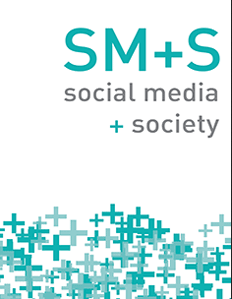青少年 Instagram 直接信息中的快乐与悲伤:神经主题建模方法
IF 5.5
1区 文学
Q1 COMMUNICATION
引用次数: 0
摘要
我们研究了青少年在 Instagram 上的直接消息(DMs)中对快乐和悲伤的表达。我们使用神经主题建模(BERTopic)分析了属于 96 名青少年的 211,778 条 DM,这些青少年捐赠了来自 101 个 Instagram 账户的数据。结果表明:(1)快乐的表达比悲伤的表达多四倍以上;(2)包含快乐表达和悲伤表达的DM数量高度相关;(3)青少年DM中快乐和悲伤的表达存在时间趋势,并且这些趋势存在个体差异;(4)包含快乐和悲伤表达的DM数量与青少年的幸福感之间没有显著的人际关系。本文章由计算机程序翻译,如有差异,请以英文原文为准。
Happiness and Sadness in Adolescents’ Instagram Direct Messaging: A Neural Topic Modeling Approach
We investigated the expressions of happiness and sadness in adolescents’ direct messages (DMs) on Instagram. Using neural topic modeling ( BERTopic), we analyzed 211,778 DMs belonging to 96 adolescents, who donated data from 101 Instagram accounts. Results showed that (1) expressions of happiness were more than four times more prevalent than expressions of sadness; (2) the number of DMs containing expressions of happiness and expressions of sadness were highly correlated; (3) there are temporal trends in the expression of happiness and sadness in adolescents’ DMs, and there are individual differences in these trends; and (4) there is no significant between- or within-person relationship between the number of DMs containing expressions of happiness and sadness and adolescents’ well-being.
求助全文
通过发布文献求助,成功后即可免费获取论文全文。
去求助
来源期刊

Social Media + Society
COMMUNICATION-
CiteScore
9.20
自引率
3.80%
发文量
111
审稿时长
12 weeks
期刊介绍:
Social Media + Society is an open access, peer-reviewed scholarly journal that focuses on the socio-cultural, political, psychological, historical, economic, legal and policy dimensions of social media in societies past, contemporary and future. We publish interdisciplinary work that draws from the social sciences, humanities and computational social sciences, reaches out to the arts and natural sciences, and we endorse mixed methods and methodologies. The journal is open to a diversity of theoretic paradigms and methodologies. The editorial vision of Social Media + Society draws inspiration from research on social media to outline a field of study poised to reflexively grow as social technologies evolve. We foster the open access of sharing of research on the social properties of media, as they manifest themselves through the uses people make of networked platforms past and present, digital and non. The journal presents a collaborative, open, and shared space, dedicated exclusively to the study of social media and their implications for societies. It facilitates state-of-the-art research on cutting-edge trends and allows scholars to focus and track trends specific to this field of study.
 求助内容:
求助内容: 应助结果提醒方式:
应助结果提醒方式:


